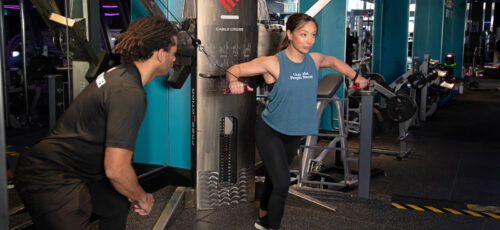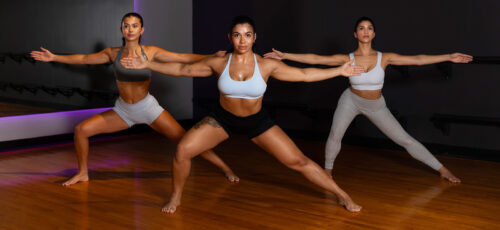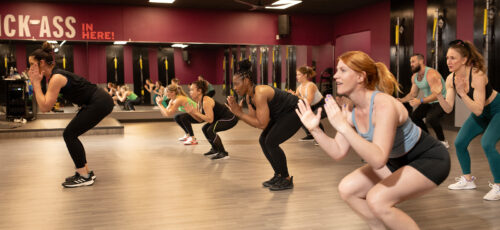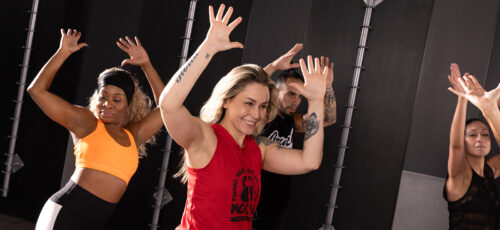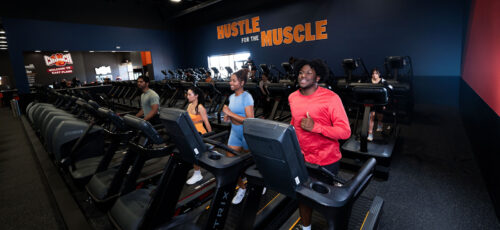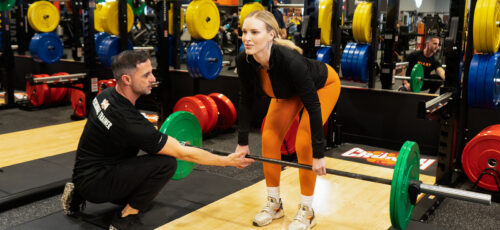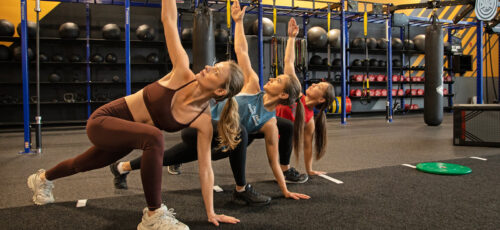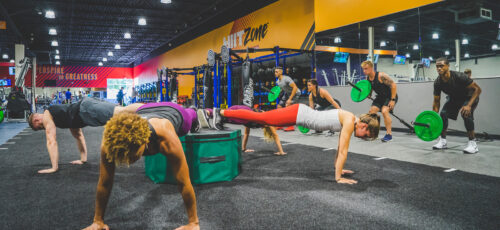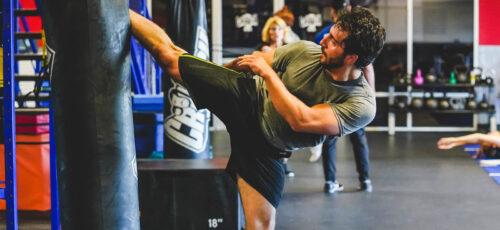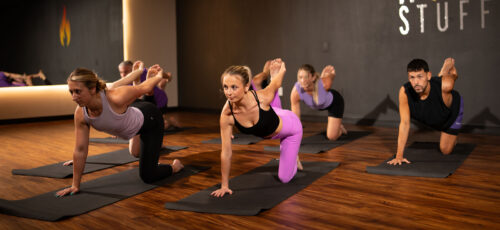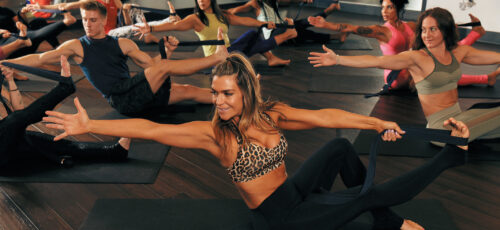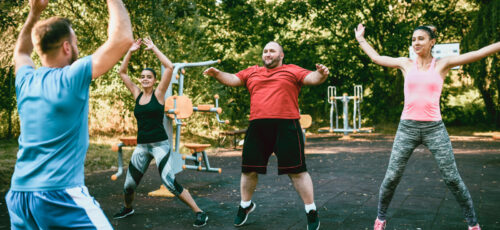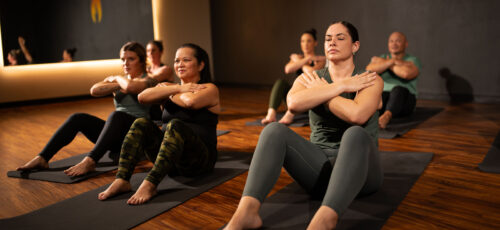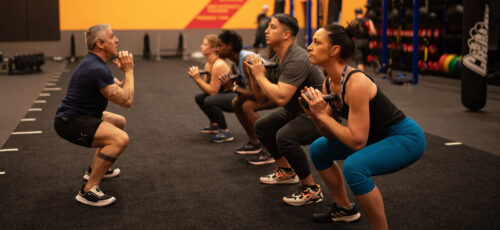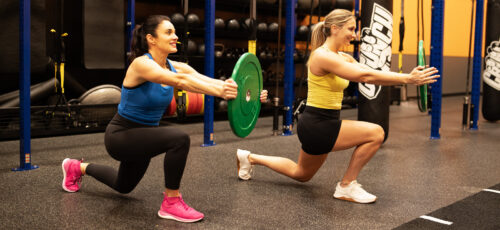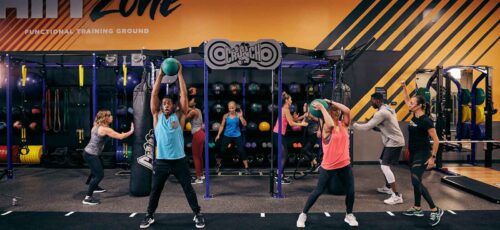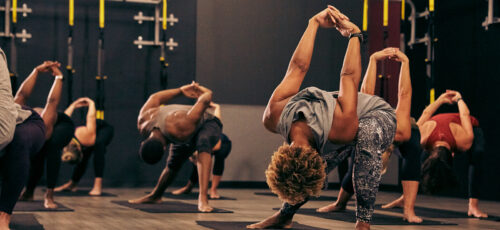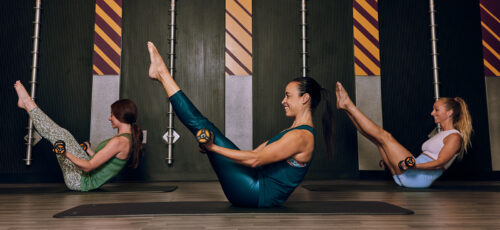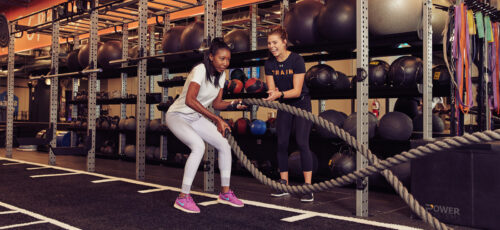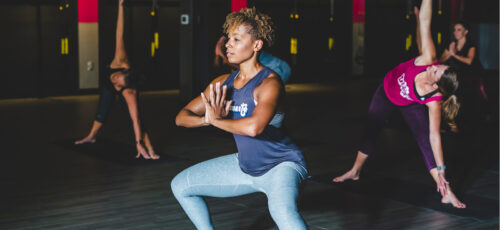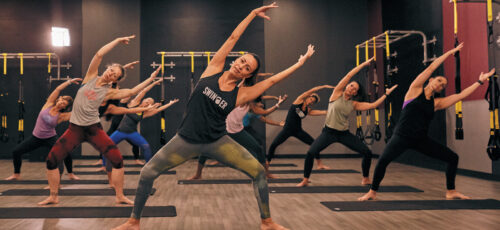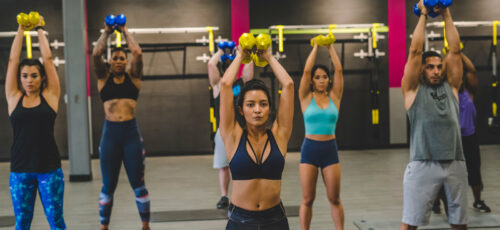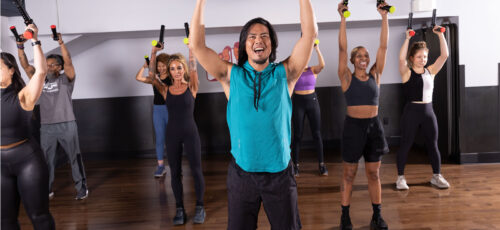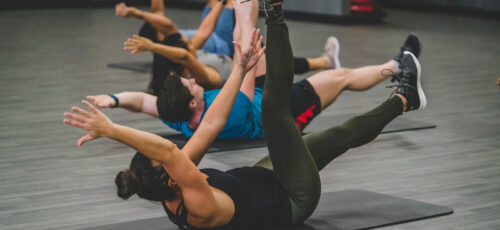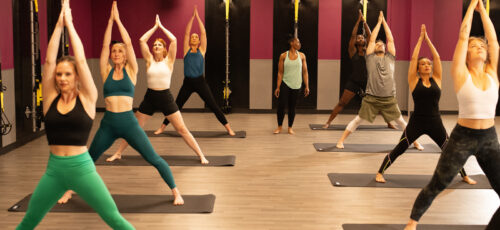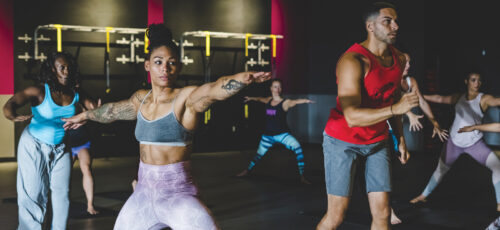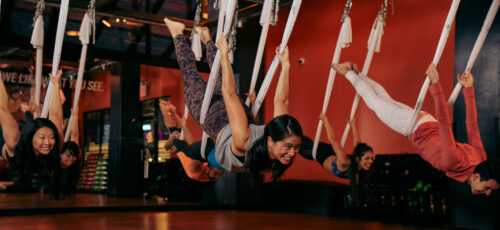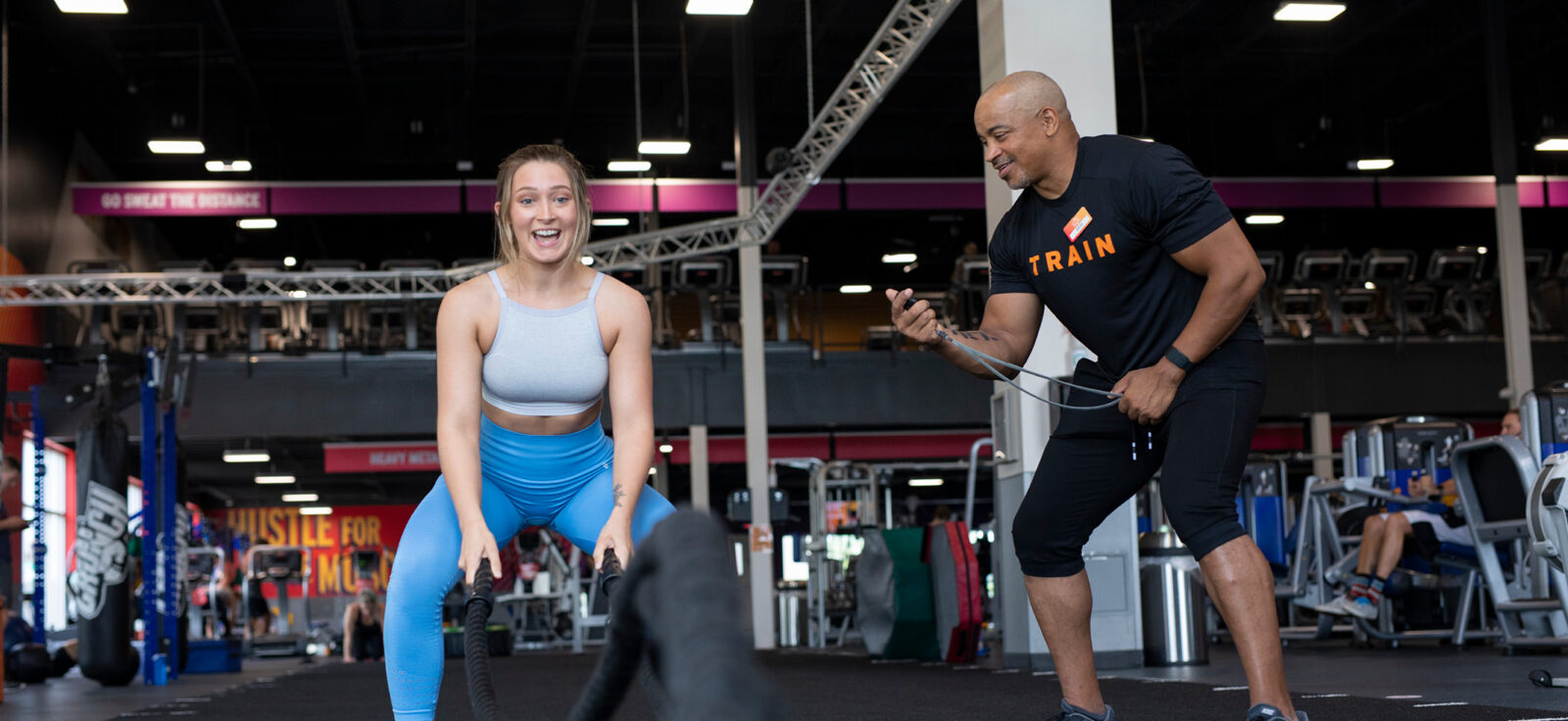
Do you feel stuck in a fitness routine or need more progress despite working out six days a week? It might be time to refresh your routine by exploring different workout approaches, whether participating in group classes, working with a personal trainer for guided sessions, and exercising independently.
Incorporating diversity into your workouts keeps your training sessions fresh and exciting and offers countless benefits for your body and mind.
The experience of each exercise routine is influenced by personal goals, the gym user’s personality, and external factors that might contribute.
In this article, you’ll discover the powerful advantages and benefits of mixing up your exercises and how doing so can lead to optimal results. For more insights, check out Crunch Fitness’ comprehensive guide.
Group Fitness Classes
Group exercise classes encompass a training methodology in which, guided by a personal trainer, you train alongside other group members using a routine designed to assist you in achieving specific fitness objectives.
Within group fitness classes, examples include High-Intensity Interval Training (HIIT), Cycling classes, Yoga, and Dance Mix, among various other possibilities. As you can observe, the likelihood of discovering a group setting where you feel comfortable and content is high.
Experimenting with all the classes available at your fitness center will aid you in identifying the ideal group exercise class that aligns with your goals, expediting your progress.

Group Fitness Classes: 9 Benefits
Among the benefits of participating in a group training class and working out alongside other gymgoers who share a similar goal are the following:
1. Challenge Your Body
Once your body adapts to a specific exercise routine, progress can stall. Varying your workouts keeps things dynamic and keeps you more engaged. Engaging your physical limits boosts your strength and fitness and helps prevent plateaus.
Mixing things up is especially important for those focused on weight loss. A well-rounded routine that includes strength training, endurance exercises, and high-intensity intervals can help shed fat while building lean muscle mass.
2. Activate New Muscles
Varying your workouts allows you to target muscle groups you might not typically engage in. You’ll experience soreness in different areas and work on muscles you’ve never focused on before, which can help correct imbalances. Overall, a well-rounded and varied exercise routine leads to superior full-body results.
3. Reduce Injury Risk
Repeating the same activity can increase the risk of repetitive stress injuries, and overworking the same muscles can cause them to wear down over time. By rotating your focus to different muscle groups on different days, you allow each area to recover properly, reducing the risk of injury.
4. Keep Workouts Exciting
Sticking to the same routine might feel comfortable and predictable, but it can also become monotonous. Viewing exercise as an opportunity for adventure and exploration helps you stay motivated and open to new challenges. Plus, continuously switching things up makes you more likely to stay interested and committed to your fitness journey.
5. Find a Supportive Community
One of the biggest benefits of group fitness classes is the sense of community they foster. When you join a class, you become part of a group of like-minded individuals who share similar fitness goals.
This supportive environment can boost your motivation, as you’re surrounded by people who encourage each other to push through challenges and celebrate achievements.
The companionship you build in these classes can make your fitness journey more enjoyable and less isolated, helping you stay committed to your goals.
6. Efficient and Functional Workouts
Group fitness classes often focus on functional workouts that target multiple muscle groups. These classes help you build strength, improve endurance, and enhance flexibility—all within a relatively short period.
These classes are designed to be time-efficient, packing an intense workout into a 45-minute or hour-long session. Whether juggling a busy schedule or just looking to maximize your time at the gym, group classes offer a structured way to get a full-body workout without spending hours exercising.
7. Expert Guidance from Instructors
Another significant advantage of group fitness classes is the presence of a qualified instructor who leads the session. These instructors guide you through each exercise, ensuring you perform movements correctly and safely.
They provide modifications if needed, challenge you to push beyond your comfort zone, and keep the energy high throughout the class. This professional guidance can be especially beneficial if you’re new to exercise or looking to perfect your form and technique.
8. Have Fun While Losing Weight
Group fitness classes combine effective workouts with a fun and engaging atmosphere. The energetic environment, lively music, and dynamic routines make exercising feel less like a chore and more like a social event.
Many classes are designed to be high-energy and upbeat, which not only makes them enjoyable but also helps you burn calories and lose weight in the process. You’re more likely to stick with a workout routine if you’re having fun, and group classes make it easy to enjoy your fitness journey.
9. High-Energy Atmosphere
The energetic environment of a group fitness class is spreadable. The combination of upbeat music, enthusiastic instructors, and the collective energy of your fellow participants creates an atmosphere that is both motivating and inspiring.
This high-energy setting can help you push through tough workouts, stay engaged, and look forward to your next class. The positive energy in the room often makes group fitness classes so addictive, helping you maintain your enthusiasm for exercise over the long term.
Group Fitness Classes: Considerations
Number of participants
In some group fitness settings, classes can have over 20 participants, making it challenging for the instructor to provide individualized attention. This lack of personal guidance might prevent you from maintaining proper form, increasing the risk of injury.
To avoid this, look for classes with smaller group sizes. If you opt for larger classes, choose exercises that are less complex and less risky.
Generic Workouts
Group fitness classes often follow a “one size fits all” approach, meaning everyone does the same workout regardless of their fitness level.
This training can be challenging, especially for beginners, as the workout may be too intense or advanced.
Finding an instructor who can quickly offer modifications and adjustments to cater to different fitness levels is crucial. However, in some classes, the ability to provide such personalized attention is limited.
Overemphasis on Variety
While variety in workouts can keep things interesting, more is needed to make progress. Consistency is key to seeing real improvement. A group class should build on previous sessions to allow for measurable progress over time. If there’s less variation from class to class, you might not achieve the results you’re aiming for.
Scheduling and Location Challenges
Finding group fitness classes that fit seamlessly into your schedule and are conveniently located can be difficult. These logistical challenges can make staying consistent and accountable in your fitness routine harder. When choosing a class, ensuring it aligns with your lifestyle is important.
Health Considerations
For those with specific health concerns or medical conditions, group fitness classes may not provide the personalized attention needed to exercise safely.
Conditions like heart disease, diabetes, joint issues, or severe asthma often require tailored modifications and close supervision, which might not be fully addressed in a group setting.
If you have any health concerns, getting medical clearance and seeking additional guidance before starting a new exercise regimen is crucial.
Personal Training
A personal fitness training routine involves a certified personal trainer who accompanies you throughout the entire training class, ensuring that you perform exercises with the proper form, enhancing the results and efficiency of the routine, and providing a customized experience for you to stay motivated the whole time.

Personal trainers: Pros and Cons
Personal training sessions offer numerous benefits to assist you in reaching your physical fitness goals. Some of these advantages include:
- Tailored Workouts: Personal trainers create customized workout plans that cater to your specific fitness goals, needs, and abilities, ensuring optimal results.
- One-on-One Attention: You receive individualized guidance and feedback on your form, technique, and progress, minimizing the risk of injury.
- Accountability: Regular sessions with a trainer help keep you motivated and committed, making it easier to stick to your fitness routine.
- Goal-Oriented: Personal trainers help set realistic goals and provide a structured path to achieve them, whether it’s weight loss, muscle gain, or overall fitness improvement.
- Flexibility: Personal trainers can adjust the workout intensity, exercises, and schedule based on your progress and changing needs.
- Injury Prevention and Rehabilitation: Personal trainers can design workouts that accommodate injuries or health conditions, ensuring you stay active while recovering safely.
Likewise, there are some disadvantages we must also mention about one on one training methodology:
- Price: Personal training can be expensive, making it less accessible for those on a tight budget.
- Dependency: Some individuals may become overly reliant on their trainer and need help to stay motivated when working out alone.
- Lack of Variety: Ask your trainer if you think the routine could use more combinations. They can easily adjust the workouts to keep things dynamic, exciting, and engaging, ensuring you stay motivated and challenged over time.
- Compatibility Issues: The effectiveness of personal training can be influenced by the trainer-client relationship; if you connect well with your trainer, it might help your progress.
- Pressure and Expectations: Some individuals may feel pressure to perform at a certain level during sessions, which could lead to stress or burnout.
Personal training is optimal for a more precise and practical approach to your fitness goals. Attain the transformation you desire with a guide who will support you every step, ensuring you steer clear of injuries, health issues, or discomfort during your journey.
Crunch’s personal training program stands at the forefront of the fitness industry. It embodies a holistic approach to health and wellness, with a team of highly skilled coaches, state-of-the-art facilities, and a diverse range of specialized group fitness classes. We empower individuals to achieve their goals with confidence and precision.
Whether aiming to lose weight, build muscle, improve endurance, or enhance overall well-being, Crunch offers personalized solutions tailored to each client’s unique needs and aspirations.
Exercising Alone
Lastly, there’s exercising alone—performing workout routines alone, making it the most prevalent training method among gym users. Using our knowledge and experience, we carry out exercises according to our preferences. Typically, we only approach an instructor when we have questions.

- Fewer Distractions: When working out alone, you have the freedom to focus entirely on your exercises without the interruptions or distractions that can occur in a group setting. This can lead to more efficient and effective workouts as you can concentrate fully on your form and performance.
- Control Over Your Routine: Exercising solo gives you complete control over your workout routine. You can design and modify your exercises according to your personal goals, preferences, and progress. This flexibility allows you to prioritize the aspects of fitness that matter most to you, whether it’s strength training, cardio, or flexibility.
- Opportunity for Solitude: For many, working out alone provides a valuable opportunity for personal time and reflection. It can be a moment of peace amidst a busy day, offering a chance to clear your mind and focus solely on your physical well-being.
- Personal Growth: Exercising independently can foster personal growth in other areas. It encourages self-discipline, self-motivation, and a deeper understanding of your body and fitness goals. As you manage your own routine, you develop problem-solving skills and learn to push yourself beyond your comfort zone.
Just like the other kinds of training methods, some of the disadvantages we find by training alone are:
- Potential for Boredom: Without the variety and energy of group settings or the direction of a trainer, solo workouts can sometimes become monotonous. The lack of social interaction or changing routines might lead to a decrease in motivation over time.
- Limited Knowledge of Exercises: If you’re not well-versed in exercise techniques or routines, working out alone can limit your exposure to diverse workouts. This might hinder your progress if you’re not familiar with how to properly execute different exercises or if you lack variety in your routine.
- Initial Intimidation: Starting a solo workout routine can be intimidating, especially for beginners. Without the support and encouragement of a group or trainer, you might feel uncertain about your form, routine, or progress, which can impact your confidence and commitment.
Exercising alone is the ideal choice for gym users who relish solitary workout classes and find satisfaction in being completely engrossed in their personal training objectives and methods.
Remember to consult professionals or personal trainers for any questions you may have regarding an exercise or routine. Performing exercises not correctly can result in injuries that we aim to prevent.

Why Not Try Them All?
Regarding fitness, moving toward a specific training method that feels comfortable or familiar is easy. However, sticking to multiple approaches might limit your potential for growth and discovery.
By experimenting with different workouts—group fitness classes, personal training sessions, or exercising alone—you open yourself to a broader range of benefits.
Each method has unique advantages, and trying them allows you to experience these diverse benefits firsthand, enhancing your physical and mental fitness.
Exploring various training methods also keeps your fitness journey exciting and dynamic. Repeating the same routine can lead to boredom and plateaus, slowing your progress.
By incorporating different training styles, you challenge your body in new ways, prevent stagnation, and stay motivated.
This diversity makes your workouts more enjoyable and helps you reach your fitness goals more effectively, as different types of exercises target different muscle groups and aspects of fitness.
Ultimately, the key to a successful and sustainable fitness routine is variety. Even if you have a favorite way to exercise, stepping outside your comfort zone can lead to discoveries about what your body can achieve.
By trying out all the different training methods available, you’ll gain a well-rounded understanding of the fitness world and find the perfect balance that works for you. This approach makes your fitness goals more attainable and ensures your journey remains fresh, engaging, and rewarding.
Crunch’s group fitness classes and personal trainers promote a culture of fun with no judgments. It is an environment built for all types of individuals with various goals. Find a Crunch gym near you to try our free trial membership, or join Crunch now.
FAQ
Is There An Extra Cost For Personal Training Sessions?
Every fitness center offers various services and features with its gym memberships. When you visit the fitness center of your choice, inquire about information regarding personal training sessions. Crunch, for instance, provides one complimentary training session with the membership. If you wish to continue with the personalized training experience, it is available as an add-on service.
Do I Have to Pre-Register for the fitness Class That interests Me?
In the best group fitness classes, we highly encourage you to pre-register if possible so that you have a secure spot. That way, you won’t have an enjoyable experience if the class is fully booked.
How Can I Start to Exercise by Myself?
Start with exercises and workout routines that are not too demanding, get familiar with each type of exercise, and gradually increase the intensity and weight of your routine.
Is My current Fitness Level Going to Influence my Development During the Group Exercise Class?
If you are starting your fitness conditioning, we encourage you to assist only low intensity group fitness classes. That way, you will slowly start to gain the strength and condition you need to go all the way to the next level.
How Can I Prevent Boredom With a Varied Workout Routine?
Mix up your workouts regularly to prevent boredom by incorporating different training methods and exercises. Set new challenges, try different classes or programs, and continually adjust your routine to keep things interesting. This variety maintains your enthusiasm and ensures you constantly challenge your body in new ways.
How do I know Which Training Method is Suitable for Me?
Finding the proper training method involves experimenting with different approaches and assessing how each fits your goals, preferences, and lifestyle. Consider your fitness objectives, schedule, and how you respond to other environments. Consult with fitness professionals or try introductory sessions to determine which method best fits your needs.
Crunch promotes a culture of positivity, inclusivity, and fun with no judgments by providing an environment for all individuals regardless of their health and fitness goals. Find a Crunch gym near you to try our free trial membership, or join Crunch now. We’re here for you – at the gym or at home. Access the best live & on-demand workouts anytime, anywhere with Crunch+. Ready to get sweaty? Try hundreds of workouts for free! Start your free trial now!















